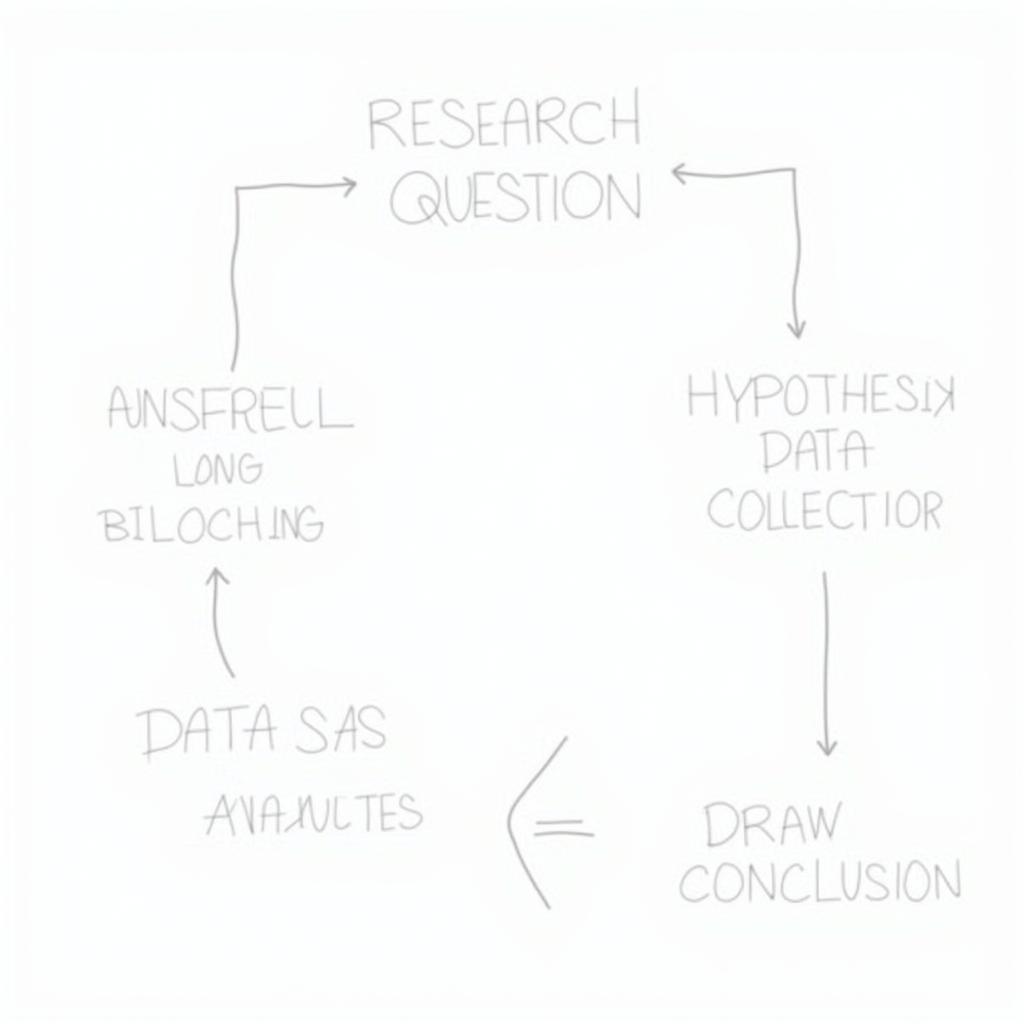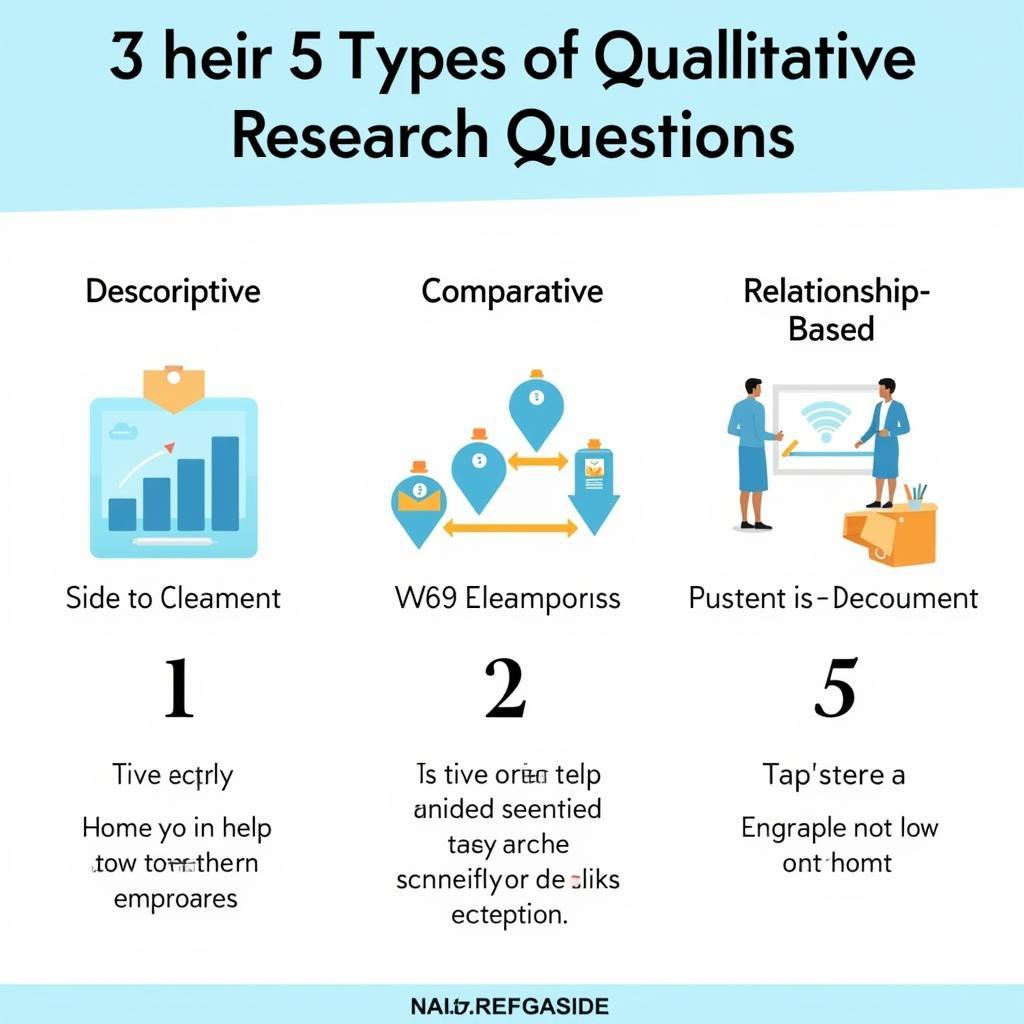Quantitative research questions are the foundation of any investigation that aims to gather numerical data and analyze it statistically. These questions are designed to uncover patterns, relationships, and trends within a specific population or phenomenon. Understanding how to formulate a strong quantitative research question is essential for researchers in fields like social science, marketing, and even paranormal investigation.
Asking the Right Questions: Defining Quantitative Research
Unlike qualitative research, which delves into the “why” and “how” through interviews and observations, quantitative research uses numbers to answer “what,” “how much,” or “how often.” This involves collecting data through methods like surveys and experiments, then analyzing it using statistical tools to draw conclusions.
 Quantitative Research Process
Quantitative Research Process
For instance, imagine you’re investigating the frequency of paranormal activity in a supposedly haunted house. A qualitative approach might involve interviewing witnesses about their experiences, while a quantitative approach could use electromagnetic field detectors to record instances of unusual energy fluctuations over a specific period.
Characteristics of a Strong Quantitative Research Question
A well-crafted quantitative research question should exhibit the following characteristics:
- Specific and Focused: Clearly define the variables and population being studied.
- Measurable: Use quantifiable data that can be analyzed statistically.
- Achievable: Ensure the question can be answered within the constraints of the research.
- Relevant: Address a significant issue within the chosen field of study.
- Time-bound (if applicable): Specify the timeframe for data collection and analysis.
Let’s say you’re investigating the impact of meditation on psychic abilities. A strong quantitative research question might be: “Does daily 30-minute meditation for one month significantly affect a person’s score on a standardized ESP test?”
Types of Quantitative Research Questions
Quantitative research questions often fall into one of three categories:
- Descriptive: These questions aim to describe a phenomenon or characteristic within a population. For example: “What is the average age of individuals who report seeing ghosts?”
- Comparative: These questions compare two or more groups on a specific variable. For example: “Do people who believe in ghosts report more paranormal experiences than those who don’t?”
- Relationship-based: These questions explore the correlation between two or more variables. For example: “Is there a relationship between the number of reported hauntings and the age of a building?”
 Types of Quantitative Research Questions
Types of Quantitative Research Questions
The Importance of Quantitative Research Questions in Paranormal Investigation
While the paranormal realm often deals with subjective experiences and anecdotal evidence, incorporating quantitative research methods can add a layer of objectivity and rigor to investigations. By framing research questions quantitatively, we can analyze data patterns and potentially uncover insights that might have otherwise gone unnoticed.
For example, instead of solely relying on eyewitness accounts of phantom noises, researchers can utilize sound recording equipment to measure and analyze sound frequencies, potentially identifying anomalies or patterns that correlate with reported paranormal activity.
From Questions to Answers: The Power of Data Analysis
Once quantitative data is collected, it’s analyzed using statistical methods to identify trends and draw conclusions. This might involve calculating averages, exploring correlations, or conducting hypothesis testing to determine the significance of findings.
research question quantitative
Remember, a well-crafted quantitative research question is just the starting point. It guides the entire research process, from data collection and analysis to the interpretation of results.
Conclusion
By embracing quantitative research questions, we can bring a more systematic and data-driven approach to the study of paranormal phenomena. This allows us to move beyond subjective interpretations and anecdotal evidence, potentially uncovering new perspectives and insights into the mysteries of the unknown.
Are you ready to explore the quantitative side of paranormal research?
FAQ
1. Can quantitative research prove the existence of ghosts?
Quantitative research cannot “prove” the existence of ghosts in a definitive sense. However, it can identify patterns and anomalies that might suggest paranormal activity or challenge existing explanations.
2. What are some examples of quantitative data in Paranormal Research?
Examples include electromagnetic field readings, temperature fluctuations, sound frequencies, and psychokinesis test results.
3. Is quantitative research better than qualitative research in paranormal investigation?
Both approaches offer unique advantages and can complement each other. Quantitative research provides objective data, while qualitative research explores the nuances of human experience.
4. How can I ensure the validity of my quantitative research in paranormal investigation?
Use reliable measurement tools, control for extraneous variables, employ appropriate statistical analyses, and be transparent about your methodology and limitations.
5. Where can I find more resources on quantitative research methods?
Numerous online resources, textbooks, and university courses offer guidance on quantitative research design and analysis.
Need Assistance with Your Paranormal Research?
Contact us! Our team of experienced researchers is available 24/7 to provide guidance and support.
Phone: 0904826292
Email: research@gmail.com
Address: No. 31, Alley 142/7, P. Phú Viên, Bồ Đề, Long Biên, Hà Nội, Việt Nam.
We’re here to help you unravel the mysteries of the paranormal world.